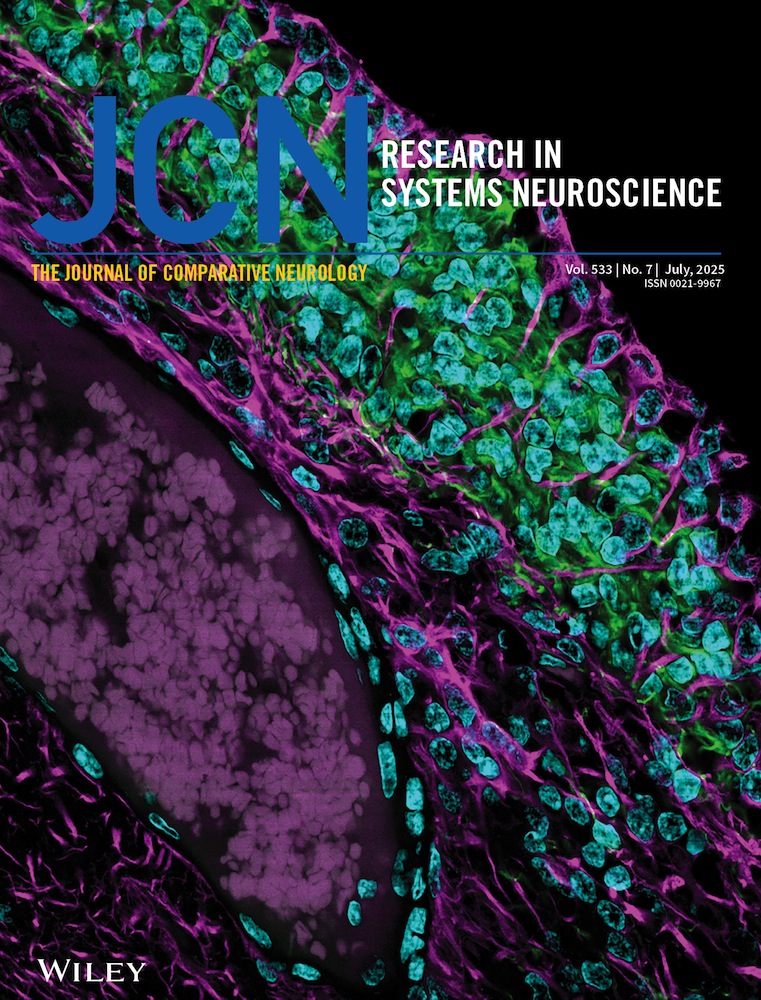Distribution of GABA-T-intensive neurons in the rat hindbrain
Abstract
The pharmacohistochemical method previously used to identify the distribution in rat brain of γ-aminobutyric acid transaminase (GABA-T)-intensive neurons has been applied to the rat pons and medulla. The method involves systemic administration of the irreversible GABA-T inhibitor Gabaculine and the detection, 12 to 15 hours after the injection of the newly synthesized GABA-T by histochemical means, GABA-T-intensive neurons were found to be rich in the following hindbrain structures: inferior colliculus, nuclei of the raphe system, nuclei parabrachialis dorsails and ventralis, nucleus cuneiformis, nucleus vestibularis medialis, nucleus tractus spinalis nervi trigemini, nucleus vagus, nucleus cochlearis, nucleus reticularis lateralis, nucleus ambiguus, nucleus cuneatus lateralis, inferior olive, and reticular formation of the pons and medulla. Neurons of the deep cerebellar nuclei and the rostral portion of the lateral vestibular nucleus were negative for GABA-T but were surrounded by granular staining indicative of impinging GABA-T-rich nerve endings. These results provide further support for the hypothesis that GABA neurons are far more GABA-T-intensive than other neurons in the central nervous system.




